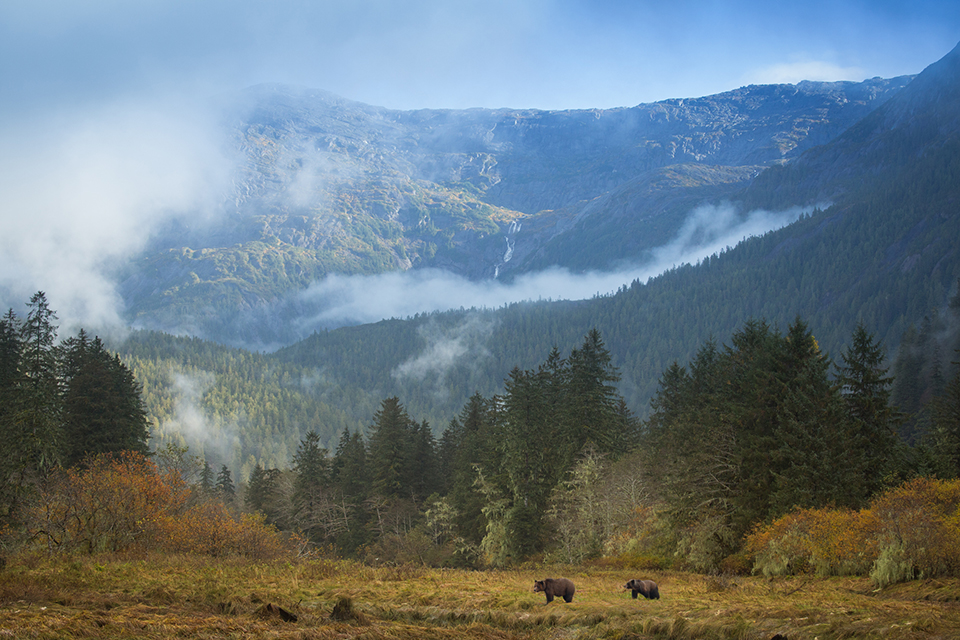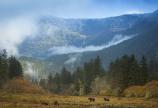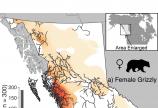New study maps hot spots for salmon-hungry bears across BC
- Anne MacLaurin

Tracking the salmon-eating habits of grizzly and black bears for nearly two decades has revealed some surprising results for UVic geography PhD candidate and Raincoast scientist Megan Adams. She hopes the study will inform land-use managers on how the bear-salmon system goes well beyond coastal areas and into interior habitats of British Columbia. She says understanding where and how much salmon bears eat is critical to their conservation.
Nearly 900 bears mapped
Adams and co-authors (Christina Service, UVic; Andrew Bateman, UVic; Mathieu Bourbonnais, UVic; Kyle A. Artelle, UVic; Trisalyn Nelson, Arizona State; Paul C. Paquet, UVic; Taal Levi, Oregon State; and Chris T. Darimont, UVic) using a chemical technique (stable isotope analysis) analyzed hair samples and mapped the diet in 886 bears over 700,000 square km from 1995-2014 to find regions where bears ate the most salmon. The findings were published in the peer-reviewed open-access journal Ecosphere, on June 22.
Grizzly bears roam 1,000 km from the coast
“Bears with high-salmon diets are often the fittest bears. We want to know where they roam and ask whether they are protected from multiple human stressors,” explains Adams. “These results demonstrate important connections between land and sea over huge landscapes.”
The findings show that grizzly bears—especially males—eat large amounts of salmon in interior habitats, sometimes over 1000 km up river from the coast.
“While we know the coast is home to many salmon eating bears, we had no idea the extent to which male grizzlies consumed high amounts of salmon deep in the interior of the province,” says Adams.
Collaboration with First Nations
Adams and colleagues collaborated with the Central Coast Bear Working Group. In particular, Wuikinuxv Nation’s Stewardship Director Danielle Shaw, who stresses, “the health of salmon stocks is a direct indicator of the health of an entire ecosystem. By looking at what other species need to ensure their sustenance, we are progressing towards a more ecosystem-based approach to conservation and management. We have a responsibility to ensure all other species are fed before we fill our own bellies.
Find out more
- CBC news reported on the study as well as The Globe and Mail
- Study published in Ecosphere
- Raincoast Conservation Foundation news release
- UVic's Department of Geography
Photos
In this story
Keywords: salmon, biodiversity, diet, environment, fisheries, wildlife, bears, nature, conservation, grizzly, geography, raincoast, animals, research
People: Megan Adams







